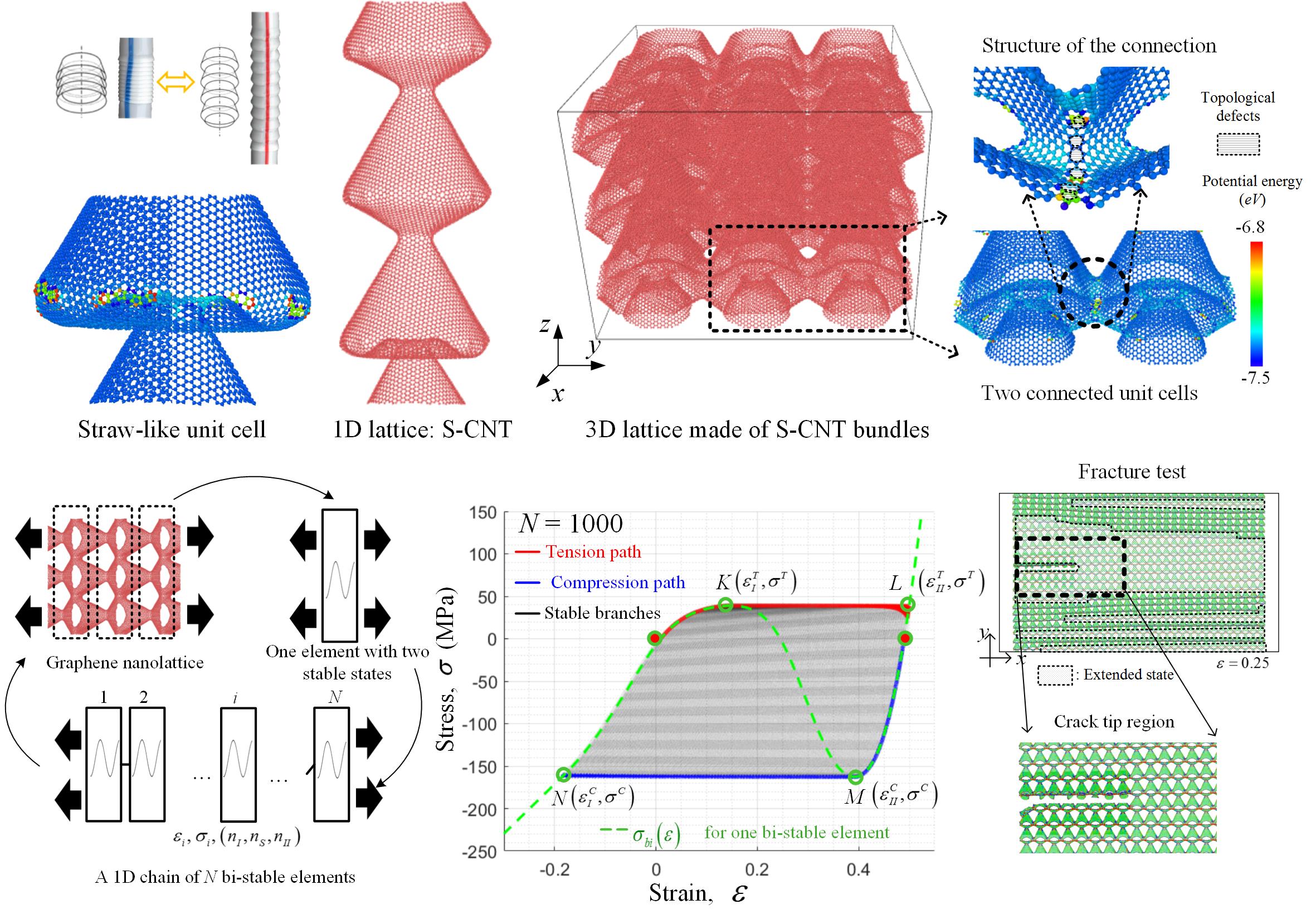Engineer Energy Dissipation in 3D Graphene Nanolattice Via Reversible Snap-Through Instability
Abstract
Carbon micro/nanolattice materials, defined as three-dimensional (3D) architected metamaterials made of micro/nanoscale carbon constituents, have demonstrated exceptional mechanical properties, including ultrahigh specific strength, stiffness, and extensive deformability through experiments and simulations. The ductility of these carbon micro/nanolattices is also important for robust performance. In this work, we present a novel design of using reversible snap-through instability to engineer energy dissipation in 3D graphene nanolattices. Inspired by the shell structure of flexible straws, we construct a type of graphene counterpart via topological design and demonstrate its associated snap-through instability through molecular dynamics (MD) simulations. One-dimensional (1D) straw-like carbon nanotube (SCNT) and 3D graphene nanolattices are constructed from a unit cell. These graphene nanolattices possess multiple stable states and are elastically reconfigurable. A theoretical model of the 1D bi-stable element chain is adopted to understand the collective deformation behavior of the nanolattice. Reversible pseudoplastic behavior with a finite hysteresis loop is predicted and further validated via MD. Enhanced by these novel energy dissipation mechanisms, the 3D graphene nanolattice shows good tolerance of crack-like flaws and is predicted to approach a specific energy dissipation of 233 kJ/kg in a loading cycle with no permanent damage (one order higher than the energy absorbed by carbon steel at failure, 16 kJ/kg). This study provides a novel mechanism for 3D carbon nanolattice to dissipate energy with no accumulative damage and improve resistance to fracture, broadening the promising application of 3D carbon in energy absorption and programmable materials.
